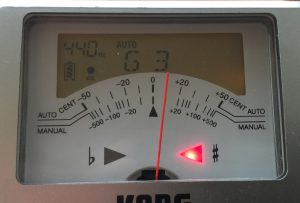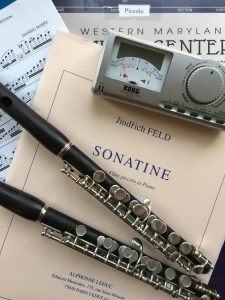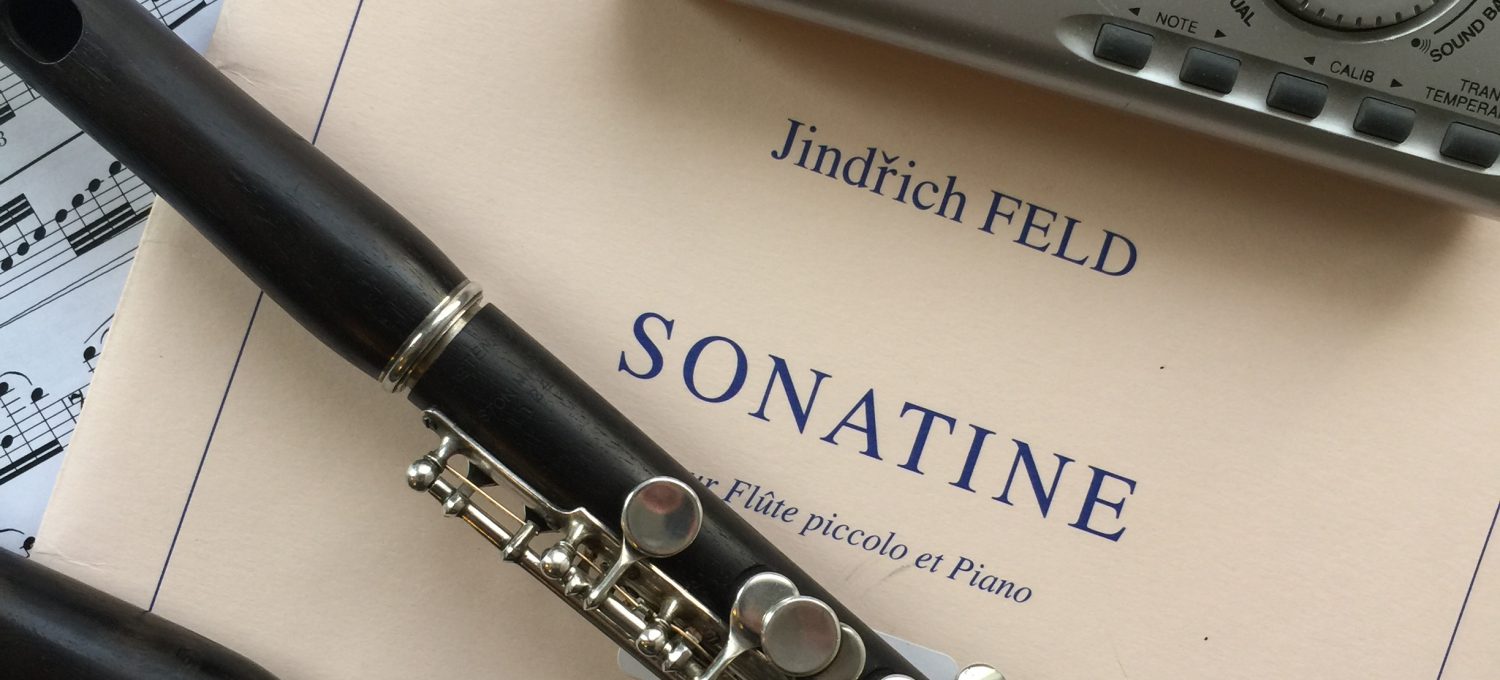Don’t lose your temper, make cents of the situation.
As piccolo players, we regularly face the stigmas associated with the piccolo specifically those regarding intonation. We have all felt the glare of the conductor or the stares from other sections during moments when our tiny little instrument is exposed and the pitch less than perfect. What we need to understand is that we are at the top of a very fragile tuning pyramid. If the foundation is remotely unstable then we have no chance of finding the pitch. We can spend hours perfecting our intonation only to have it seemingly crumble before our very eyes. For those that understand the instrument and its place in the grand scheme of the ensemble, we are seen as having a “death wish” or being a “glutton for punishment.” Our fight is never ending and is always an up hill battle.
The problem: playing in tune. The conflict: being in tune.
We spend hours with pedal tones, using tuners, scales, arpeggios, and multiple  fingerings locating the pitch center for each note on our instrument. We work tirelessly to develop the maximum tonal quality, dynamic control, AND pitch center. We listen closely to our colleagues and our place in the chord and ensemble being ever so diligent about balance. We know and understand our instrument and its tendencies and feel prepared…and then it happens. We get to the part, we listen we place the note, and it’s not right. We adjust, we listen, and it’s still not right. We change fingerings….wrong again. We hope that rehearsal won’t stop for the intonation, it really wasn’t THAT bad. Then we see the cut off! Doomed again. We tried to tune with the flutes, we tried matching the oboes, we tried matching the trumpets to no avail. We know that note is 10 cents sharp and we adjusted accordingly, so why is it so bad? Well, what really happened is the low brass had a small pitch disagreement, a slight discrepancy, and now we are getting the blame.
fingerings locating the pitch center for each note on our instrument. We work tirelessly to develop the maximum tonal quality, dynamic control, AND pitch center. We listen closely to our colleagues and our place in the chord and ensemble being ever so diligent about balance. We know and understand our instrument and its tendencies and feel prepared…and then it happens. We get to the part, we listen we place the note, and it’s not right. We adjust, we listen, and it’s still not right. We change fingerings….wrong again. We hope that rehearsal won’t stop for the intonation, it really wasn’t THAT bad. Then we see the cut off! Doomed again. We tried to tune with the flutes, we tried matching the oboes, we tried matching the trumpets to no avail. We know that note is 10 cents sharp and we adjusted accordingly, so why is it so bad? Well, what really happened is the low brass had a small pitch disagreement, a slight discrepancy, and now we are getting the blame.
The challenges
There are a lot of variables to playing in tune in an ensemble.
- Knowing your and your instrument’s pitch tendencies.
- Knowing the pitch tendencies of others and their instruments.
- Knowing the score.
- Adjusting to other’s discrepancies.
- Dynamic and range demands of the repertoire AND the conductor.
- Adjusting to other’s discrepancies…
Yes, “adjusting” is on there twice. We are not machines and as good as a player may be, our fate is frequently dependent on a colleague. Team work is the answer. Remember, you aren’t the only one playing. Just because you play the piccolo doesn’t mean you don’t need to know anything about the effects dynamics can have on the clarinet. Yes, you know your high Bb is in tune but realize that you are going to sound flat up there because it is so high. There is a 95% chance that the tuba might be a little sharp, which spells doom. Playing the piccolo in tune is a bit like faux finishing or an illusion. Yes, the higher the quality of the group, the more time you get to spend being in tune but you are still going to have to bend. As one of the most exposed instruments, we are the first to be heard or blamed for  intonation.
intonation.
Knowing the score is probably one of the best trade secrets, well, it isn’t really a secret. When you know who you are playing with and the tendencies of their instruments, it gives you a fighting chance. Here are some tips to for surviving as a piccolo player although there is no substitution for regular intonation practice.
Survival Tips
- Know your instrument and its tendencies.
- Know the score and who is playing and when.
- Understand the pitch tendencies of the other instruments.
- Team work!
- Make sure to tune the second register as this is where we spend most of our time.
- Tune to your section as a first priority.
- When having to choose who to tune to, choose the loudest section.
- Always play with a good sound because a good sound is supported.
- When things go downhill, established a pitch relationship with something, then decide where to go from there.
- If you have a piccolo part that is independent, don’t try to hide or be shy, pitch will be the first thing to go.
- Always use your best judgment and be flexible.
As always, be bulletproof. Piccolo players get a bad rap and for good reason. The instrument is difficult to play and we rely greatly on others for musical support. When they fail, we wear the target. Be strong, play well!
Some resources for practicing intonation
Leonard Garrison’s Suggestions – Top 10 ways to practice tuning on piccolo
Stephanie Mortimore – Stephanie’s article talks about temperament and some science behind tuning.


Informative guide on how to get started on the Piccolo.
For many, the modern Piccolo may come across as the younger, louder version of the flute.
However, its unique sound helps to provide irreplaceable value amongst the instrument kingdom. Specialising in emulating nature and building suspense for performances, the piccolo is known to be mastered by only the very few. We at Teds-list have also produced our own rendition of a how to guide for the Piccolo. If you have the time, please read through it and give us some feedback!
Thank you for your time
Mo